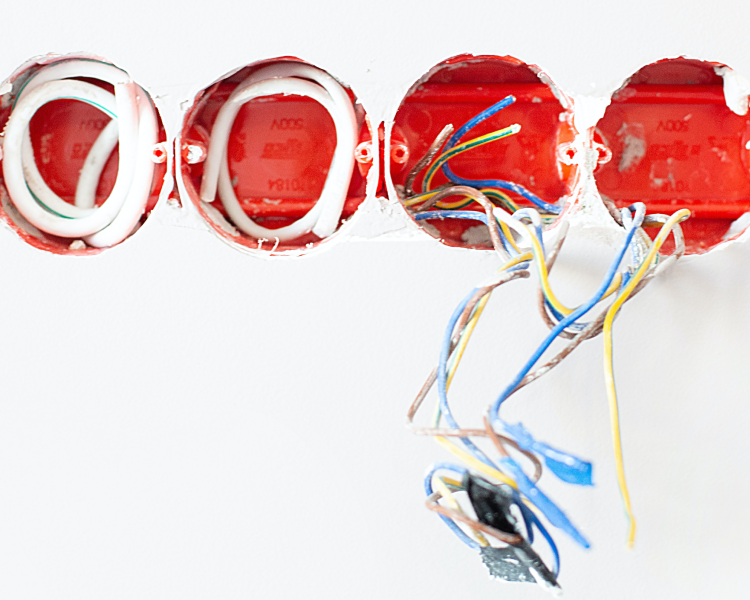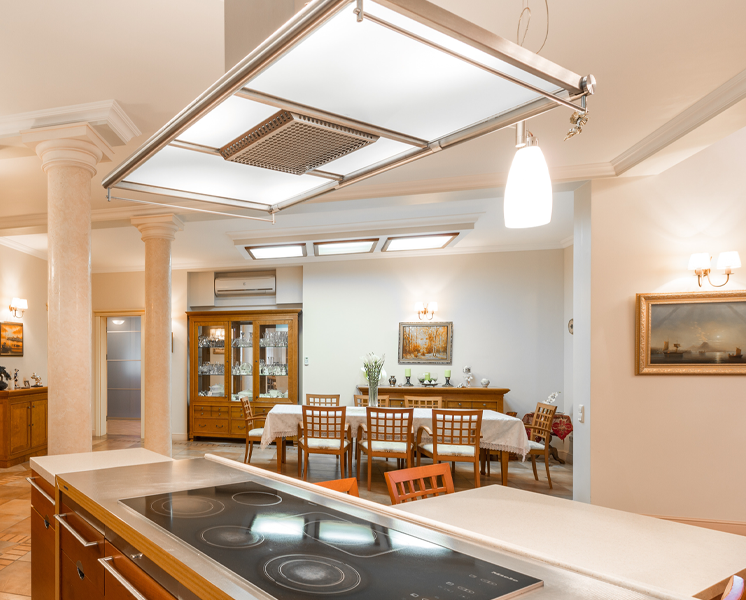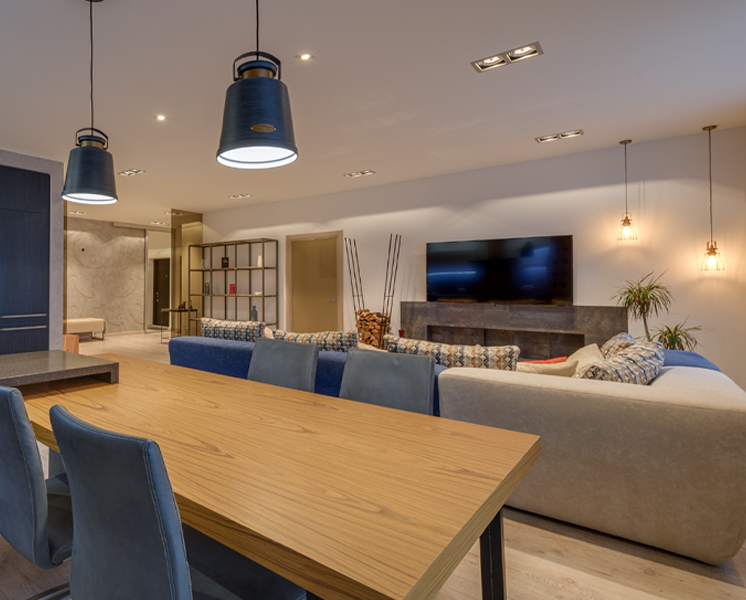In the case of smart lighting systems, the neutral wire is crucial because it's always "hot," even when the wall switch is physically off. It makes programming your smart home orders of magnitude easier because you don't have to worry about the state of the wall switch at all times. Without adding a neutral wire to a light switch, your smart bulbs are no more intelligent than regular "dumb" bulbs if the wall switch is in the off position.
The circuit is broken when a light is turned off, and no commands can be sent to the light to tell it to turn itself on. Since a neutral wire always carries current, orders can be sent to fixtures even when the lights are out. It almost seems like magic.
All homes in North America built since the mid-1980s have a neutral wire. Thus, smart home devices are designed for that building code. Homes built earlier most likely don't come with neutral wiring, and alternative means must be found to operate smart lighting, such as 1) rewiring your home, 2) buying smart bulbs, or 3) only buying smart lighting that doesn't require adding a neutral wire to a light switch.
- Safety First!
- How to Find the Neutral Wire in a Light Switch
- How to Add Neutral Wire to Light Switch Safety
- Evvr In-Wall Relay Switch no neutral wire
Safety First!
Building codes in North America determine a color scheme for structural wiring, making identifying the type and purpose of household wiring easy and safe. You'll have to remove the light switch wall plate to see if you need to know how to connect a neutral wire light switch in your home. But before you start tampering with your wall switch, you need to turn off the power to the switches you're working with inside the house.
Your first step begins at your circuit breaker box. When you open your electrical panel door, there should be a legend or labels identifying what each breaker powers. Find the breaker that sends power to the light switches you plan to upgrade and turn it off.

If you're unsure which breaker to flip, or if your breaker box is not labeled, you always have the "nuclear" option of switching off the main breaker and killing all power to your home while doing the wiring. It's overkill but the safest option. You'll have to reset any electrical clocks in the house when you turn the power back on, but that minor inconvenience is much better than electrocuting yourself.
Once you've flipped the proper breaker, return to the switch you're working with and try to turn on the light. If the light comes on, then you flipped the wrong circuit breaker. Or if you flipped the main breaker and the light still comes on, you've got bigger electrical problems than a novice can handle, and you should call a professional electrician.
Otherwise, the power should be off, and no light activates when you flip the light switch. After confirming that the power is off, it's safe to proceed.
How to Find the Neutral Wire in a Light Switch
Your next step is to remove the face plate cover to the light switch by unscrewing the two small screws that hold it in place. Once the plate is removed, carefully pull the light switch out of the wall, fully extending the attached wires so you can see what wires are available. How to determine which wire is hot and neutral?
Exposing the wires will enable you to easily identify each wire based on standard building code specifications. For example:
- Hot wires will always be black, red, or white.
- Neutral wires will always be white or gray, typically capped with a wire nut, and won't be connected to the light switch.
- Ground wires are always bare copper or green.

Since the neutral wire isn't connected to anything, it'll be coiled up inside the switch box behind the light switch.
If there's no coil of wire behind the light switch, then you should have three wires attached to the switch, a black, white, and copper wire. That means you DON'T have a neutral wire even though one of the wire casings is white. Remember, there are always two hot wires and a ground wire, and in a three-wire setup, the black and white wires will both be hot.
Once you've identified what wires you have, whether you have a neutral or not, it's always smart to label each wire with masking tape before removing them from the light switch, so you don't forget where each one goes when you're ready to put it all back together. As an extra precaution, take a picture of the wiring while it's still attached to the light switch so you have a visual record of how it was connected before you disconnected anything.
How to Add Neutral Wire to Light Switch Safety
Most smart switches sold today require you to know how to add neutral wire to light switch connections to automate the lighting in your home. As mentioned before, the reason is that the smart light must always have a power source to receive instructions from the hub or your remote device, even when the power at the wall switch is in the off position.
Smart switches can tie into the neutral wire hidden behind the standard light switch in your wall box to complete the electrical circuit, providing a conduit for the devices to receive command signals at all times.
The installation instructions included with your device will tell you exactly how to add a neutral wire for smart switch since different manufacturers may take slightly different approaches to the task.
>> How to wire a smart switch with no neutral
Evvr In-Wall Relay Switch no neutral
Of course, the best option is not to require you to know how to add neutral wire to switch box, which is why the Evvr In-Wall Relay Switch is the perfect choice for controlling your smart lighting whether or not your home has a neutral wire.
The Evvr In-Wall Relay Switch doesn't require neutral wiring, so there's no need to connect a neutral wire when installing this smart light switch. It's a revolutionary, no-neutral smart lighting product designed for every home of any age for new-build and retrofitting projects.

The switch consists of an innovative combination of a smart relay and a smart switch that supports all kinds of wall switches and can convert any single or multi-bulb setup into an intelligent lighting system.
Control lights and more with conventional wall switches or wirelessly with your voice via Siri, a tap, or the Evvr Mobile App, whether at home, in the office, or on vacation and you never need to learn how to add a neutral wire to a light switch.
>> What is no neutral smart switch and when to use it?
>> Top 5 Best Smart Light Switch With No Neutral
Conclusion
Making electrical connections to the wiring in your home can be scary if you've never worked with electricity in the past. You have a right to be concerned because one careless mistake can be physically and financially costly. When in doubt, always hire a professional electrician and stay safe for your family’s sake.
However, the smart switches manufactured today are purposely designed with the DIY enthusiast in mind. So, don’t bother trying to figure out how to find a neutral wire light switch.
If you want an easy-to-install and easy-to-use smart light switch, then you want to investigate the Evvr In-Wall Relay Switch as your smart lighting device control of choice.
If you want a superior no-neutral lighting control switch, contact the dedicated sales and technical support team for a free consultation TODAY!











